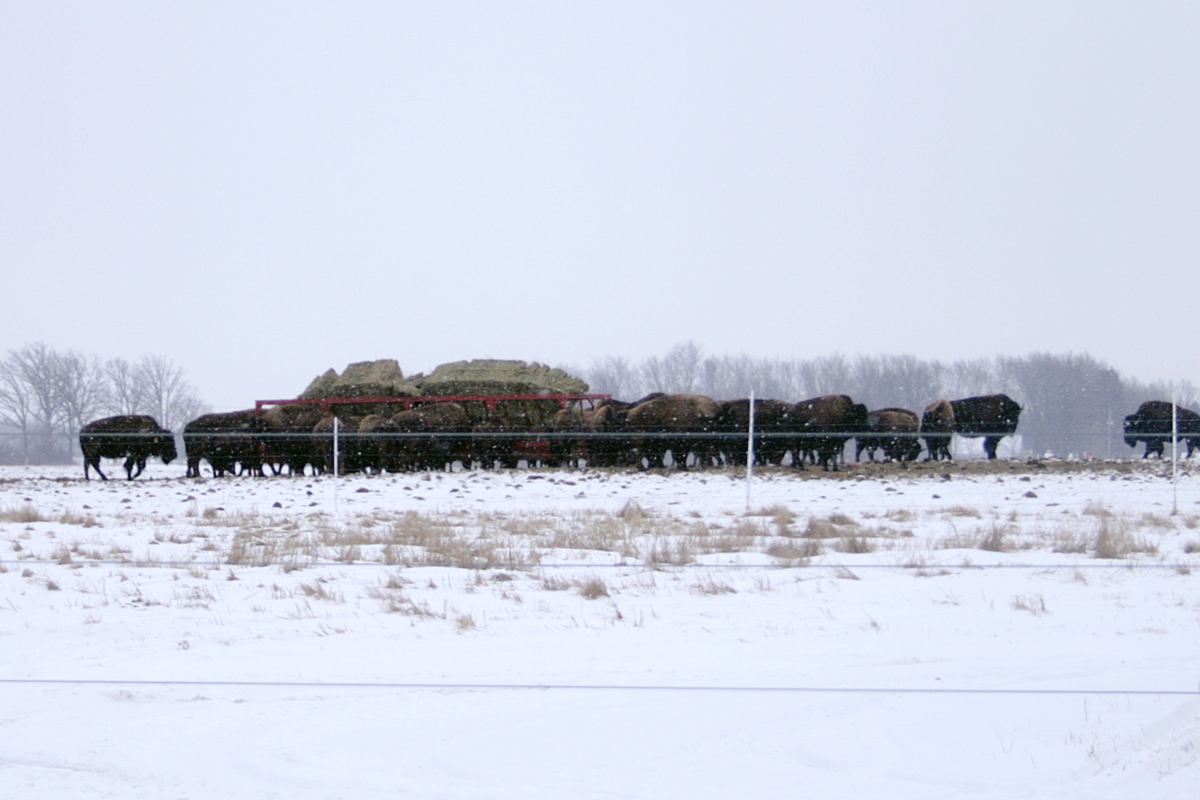Friday February 13, 2015
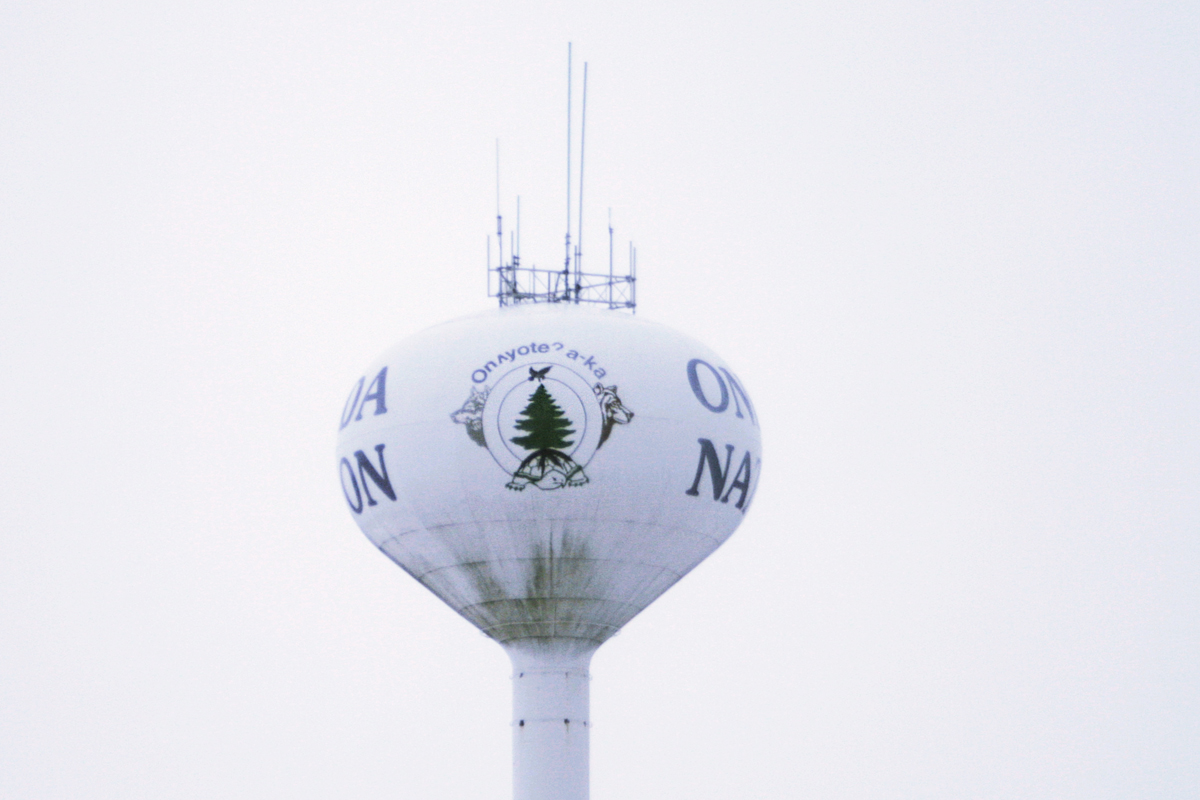
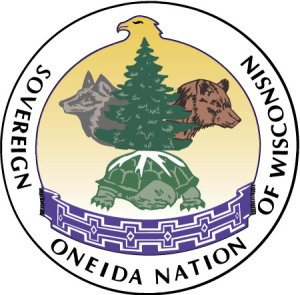 We packed into two cars to journey from Madison to Oneida. Our visit had been in the works since our last meeting back in December. It had been three years since the Oneida Nation film preservation project started and the new Tribal Libraries, Archives and Museum (TLAM) class of spring 2015 was coming up for a visit. The group comprised of students from the school of library and information studies program led by Omar. With a cart full of canisters to go, the viewing phase of the film project is projected to be complete by late spring. For this meeting our new group members met with tribal historian Loretta Metoxen, tribal archivist Reggie Doxtater and tribal multimedia specialist Eliza Skenandore. We brought over some materials for Loretta to review in order to help us identify community members involved in the 1970’s production of Forest Spirits. Loretta blew us always with her impeccable and extensive memory as she called out names left and right of people within the episode. Dare I say that Loretta is a human archive.
We packed into two cars to journey from Madison to Oneida. Our visit had been in the works since our last meeting back in December. It had been three years since the Oneida Nation film preservation project started and the new Tribal Libraries, Archives and Museum (TLAM) class of spring 2015 was coming up for a visit. The group comprised of students from the school of library and information studies program led by Omar. With a cart full of canisters to go, the viewing phase of the film project is projected to be complete by late spring. For this meeting our new group members met with tribal historian Loretta Metoxen, tribal archivist Reggie Doxtater and tribal multimedia specialist Eliza Skenandore. We brought over some materials for Loretta to review in order to help us identify community members involved in the 1970’s production of Forest Spirits. Loretta blew us always with her impeccable and extensive memory as she called out names left and right of people within the episode. Dare I say that Loretta is a human archive.
We departed the cultural cottage with Loretta and Eliza and took a lunch break at the usual spot, Azteca. After enjoying a delicious and inexpensive meal we went back to the cultural cottage and had further discussions about the film preservation project. One of the challenges of continuing work from previous TLAM class is adjusting to a workflow and system created by other students. In trying to keep continuity, each new batch of TLAM students receives training from the film archivist of the Wisconsin Center for Film and Theater Research on how to handle film and describe the physical condition of it.
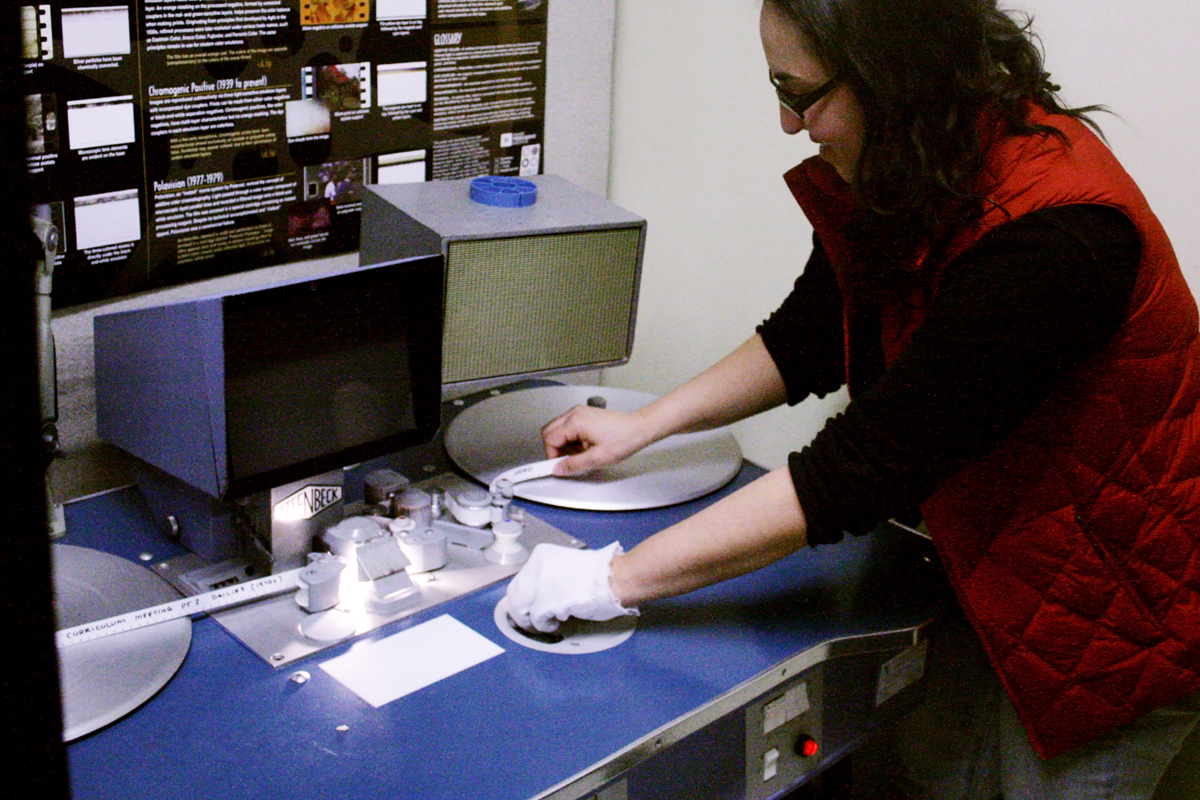
Along with the film workshop students also go through documents describing the service project, which were left by previous TLAM students. Meeting routinely with tribal representatives of Oneida Nation is vital for many reasons. Personally, for most of us, it’s our first time entering a sovereign nation and collaborating with one. In terms of taking care of business, these meetings help guide us as the tribal archivist and tribal historian speak about their needs, this helps us determine the direction of the service project. On that note, an exciting prospect of another project involving digitizing media from the early 90’s was passed our way. This will involve coming up with a possible digitization plan for several boxes of 8mm videocassette tapes that feature Oneida Business Committee meetings.
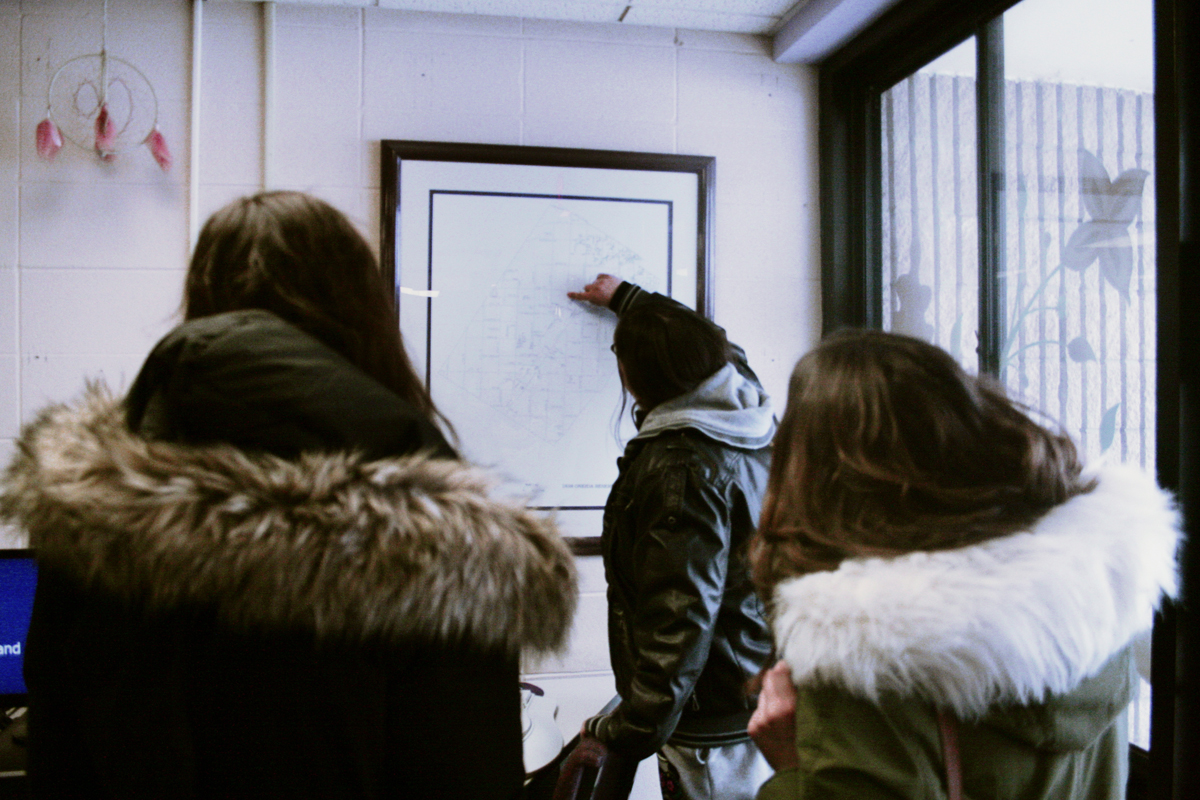
After we wrapped the “formal meeting” we, well mostly Omar, convinced Eliza to give us a short tour around the reservation. With two cars and one tour guide we used our cell phone as way for Eliza to communicate to both cars while traveling to different places…(pretty creative). Our first stop was the library where got a thorough tour of the collection, the cool technology and the awesome craft bar run by her mom. We can’t forget to mention the two bags of fresh popcorn given to us at the library, which went nicely with our mobile tour.

Next we visited a building that was featured in the film. In the film, elders are sitting inside a room with an instructor how to write and pronounce words in their language. Our next stop was a visit to see the Buffalo herd, which was another first for most of us… thank you Eliza for that awesome experience. The last stop of our tour was the Oneida Nation museum. The director, Rita Lara, help to set up this special treat for our group. We were shown the archive and enjoyed a brief walkthrough by Shawn Skenandore of the software used to catalog and describe the photo collection. Shawn also invited us to come back anytime so that he can put us to work.
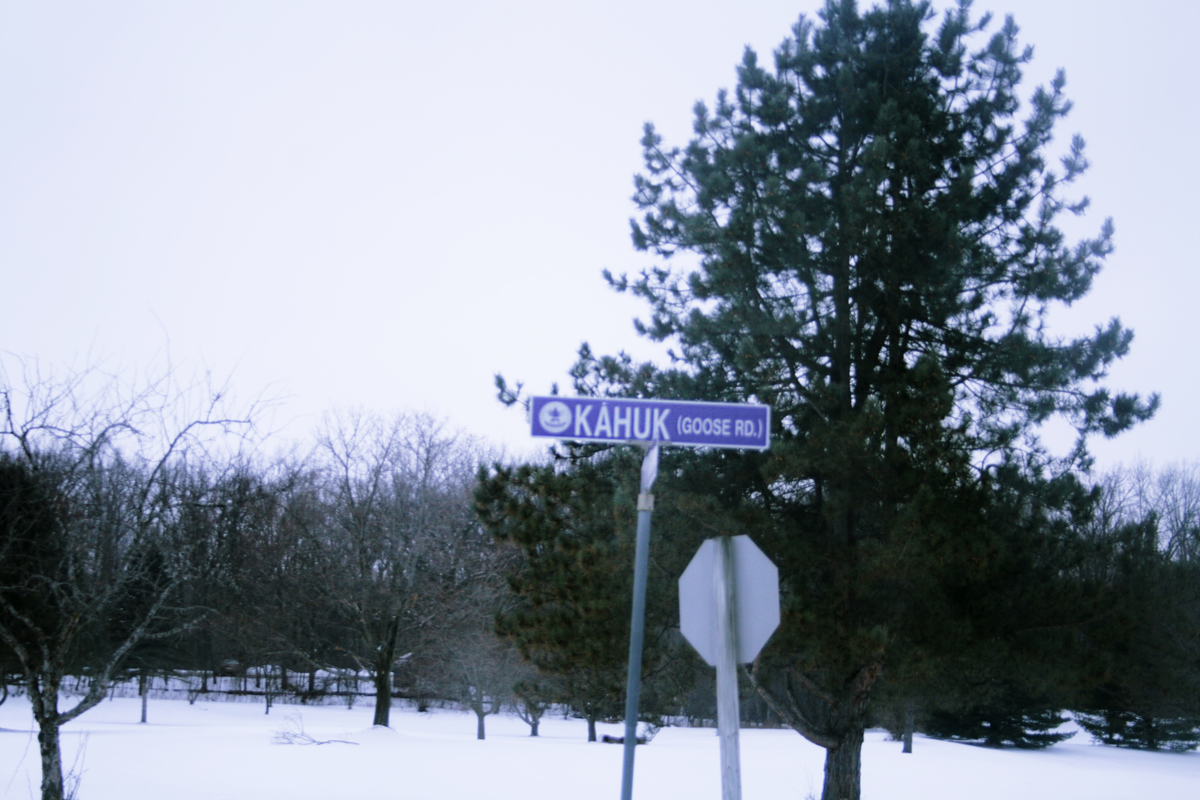
Highlights of the trip:
- April – Witnessing tribal historian Loretta’s ability for remembering people and events from many years ago. I don’t know how she does it.
- Mary Kate – I was blown away by how stunning the Turtle School is. The Turtle School looks like any other newly built school until you see the eyes. The eyes of the turtle peek down at you from several stories above, and slowly you notice the subtle curves of the turtle’s arms, legs and tail. The Turtle School was built in 1994 and serves elementary and middle school students in the Oneida community. I wish I could go to the Turtle School.
- Molly – I was struck by how little has changed with Oneida language instruction at non-tribal schools. Eliza let us know that she was still teaching Oneida during the lunch hour–exactly like we see in the film footage from the 70’s.
- Margaret – I loved the symbolism, language, and color purple found throughout the reservation. From the turtle school, to the Oneida language street signs, and the color purple, there is a strong sense of community represented in their symbols. These symbols connect the Oneida people to their creation story as well as other parts of their culture, including their purple wampum belts made from quahog shells, and their clan animals: turtle, wolf, and bear.
- Carolina – Like April, I was amazed by Loretta’s knack for remembering names of people in the community, even 40 years later. In general, though the film on its own was also a treat, as it gave me a better understanding of the community and what has or hasn’t changed since the 1970s.

-Oneida Group

